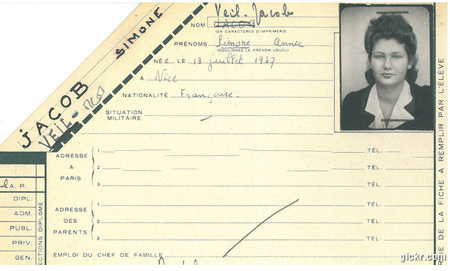Home>Lecture halls renamed after two legends

04.09.2018
Lecture halls renamed after two legends
Students will now have class in the Simone Veil or Jeannie de Clarens lecture halls, the first at Sciences Po to be named after women. In honor of two extraordinary graduates, this decision to rename lecture halls after two female alumni with extraordinary stories is a symbolic gesture amongst other actions taken in favor of gender equality.
Simone Veil (1927-2017), a major political figure and icon of the Women’s Rights movement
Located at the 28 rue des Saint-Pères site in the heart of Paris, the Caquot lecture hall is being renamed Simone Veil after one of Sciences Po’s most famous graduates who passed away in June 2017. Simone Veil began her studies at Sciences Po at 18 years old in October 1945, less than six months after returning from a concentration camp in Germany, where most of her family died. She spent three “happy and intense” years studying in the Public Service section, one of the most male-dominated sections of the institution at the time, with only 20% of women. She graduated in 1948 at 21 years old, highly determined to enter the professional world once her husband, Antoine Veil, whom she met at Sciences Po, had graduated from ENA (Ecole Nationale d’Administration or French School of Administration). In 1956, Simone Veil passed the national examination to become a magistrate. In 1970, she became secretary general of the Supreme Magistracy Council. In 1974, she became the Minister of Health and within the same year successfully pushed the law that legalized abortion, becoming an icon of the Women’s Rights movement. She later became the first president of the European Parliament (1979-1982), and a prominent political figure in the construction of the European Union. She passed away in June 2017, and was elected to the Académie Française (French Academy) in 2008. She entered the Pantheon in July of 2018.
Jeannie de Clarens (1919-2017), interpreter, spy and heroine of the French Resistance
Born in 1919, Jeannie Rousseau was the daughter of a brilliant multilingual diplomat. She studied at Sciences Po from 1937 to 1940 and graduated at the top of her class. At the outbreak of World War II, she moved with her family to Dinard, Brittany, where she began working as an interpreter for the occupying German forces. This led her to become one of the most talented (and unknown) spies of the Second World War. In Brittany and then in Paris, where she returned in 1941, she transmitted information that she gathered from the German authorities thanks to her position as a translator and interpreter. In 1942, she was recruited by the French Resistance. Under the code name “Amniarix,” she was responsible for one of the greatest exploits of the Allied forces for transmitting intelligence that allowed the British army to delay the development of the German flying bombs V-1 and V-2. In April 1944, she was arrested by the Gestapo and deported to Ravensbrück. One year later, in April 1945, she was released and returned to Paris. After the war, she married Henri de Clarens and pursued a career in translation, working for the United Nations and other international organizations. She seldomly spoke about her past. She was later awarded the Resistance Medal and the Croix de Guerre. In 2009, she was made a member of the Legion of Honor. She passed away on August 23rd, 2017, at 98 years old.
> Read her portrait in The New York Times.
Sciences Po’s actions for gender equality
As one of 10 “University Champions” of the United Nations’ HeForShe programme, Sciences Po is committed to promoting gender equality through a number of actions: professional workshops and awareness campaigns on everyday sexism, recommendations sent to faculty on preventing inequalities in the classroom, an annual "bring your children to school/work" day, and many more.
> Discover 8 ways Sciences Po acts to advance gender equality.
